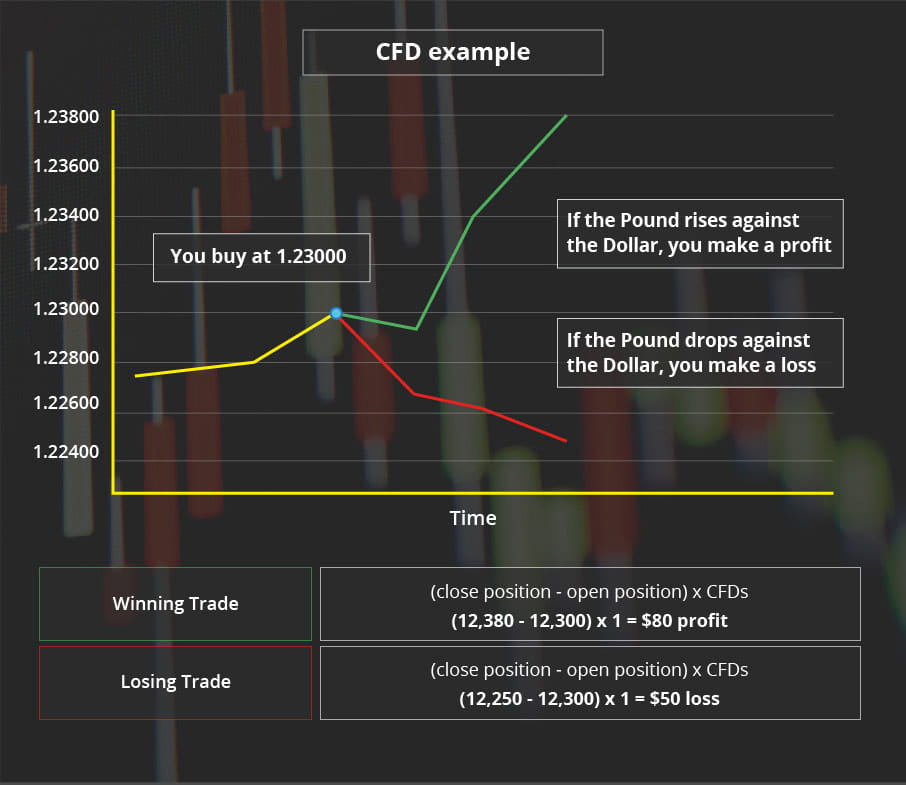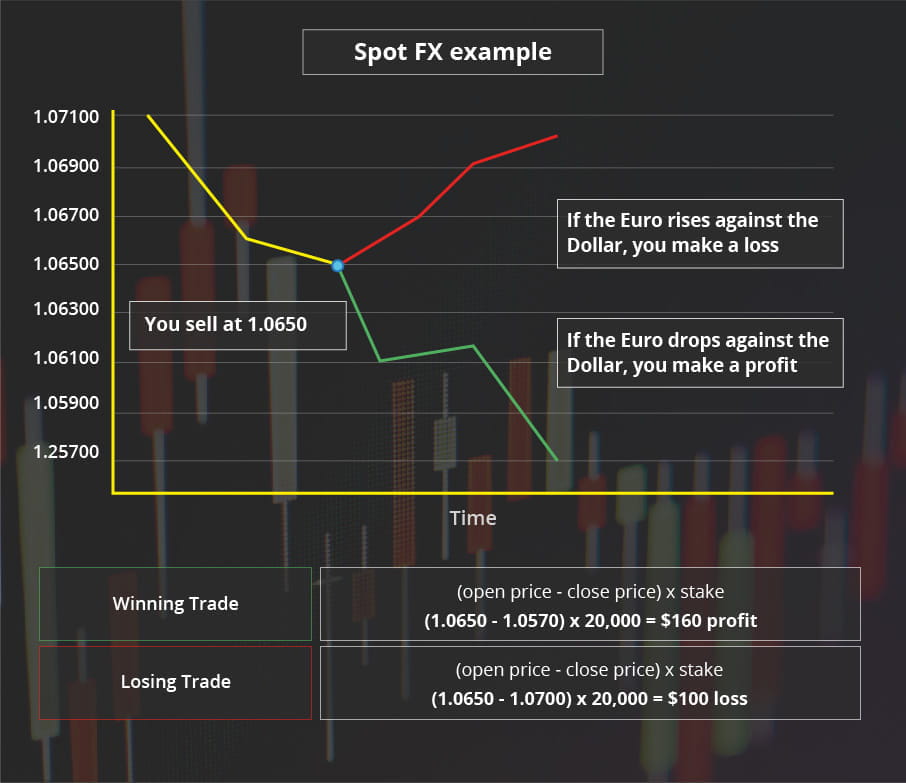
Forex trading
Forex examples
Forex trading allows you to speculate on price movements in the global foreign exchange market. Currency values rise and fall in relation to each other and in response to national and international economic, financial and political events.
When trading forex, you would buy a currency pair if you believed that the base currency will strengthen against the counter currency. Alternatively, you would sell a currency pair if you believed that the base currency will weaken in value against the counter currency.
You can choose to trade FX through CFDs or spot FX.
Buying (going long) GBP / USD as a CFD trade
The jobs market in the US appears to be stalling and you expect the level on the non-farm payrolls to come in below analyst’s estimates.
You believe that the US dollar will weaken and the British pound will strengthen against the US dollar, and decide to buy (go long) 1 CFD (per 0.0001) on GBP/USD at 1.2300.
Margin and Profit/Loss are calculated (and denominated) in the second, or counter currency of the pair.
The winning trade
Good news, the non-farm payrolls came in weaker than expected and the dollar slumped sending GBP/USD higher. GBP/USD is now trading at 1.2380 / 1.2382 and you decide to sell to close at 1.2380.
You bought at 1.2300 and sold at 1.2380, a rise of 80 pts. This gives you a profit of $80
City Index automatically converts trading P&L into the client’s denominated account currency at the prevailing market rate at the time that the trade is closed.
Losing trade
Let’s look at what would have happened if the actual non-farm payroll data had come in better-than-expected, the US dollar would have strengthened against the pound, sending GBP/ USD lower.
If GBP/USD fell and you sold to close at 1.2250 you would lose $50.

A sell trade (going short) EUR / USD as spot a forex trade
Investors are concerned about the upcoming elections across Europe and you expect the euro to fall against the US dollar. You decide to sell (go short) €20,000 at 1.0650.
In forex trading, the trade size is in units of the first, or base, currency in the pair
EUR/USD has a margin factor of 3.33%
The margin as well as the p&l are calculated in dollars, the counter currency of the pair.
Winning trade
The euro drops against the dollar as political event risk increases and you decide to buy €20,000 at 1.0570 to close your trade with a profit of $160.
City Index automatically converts trading P&L into the client’s denominated account currency at the prevailing market rate at the time that the trade is closed.
Losing trade
Supposing a weaker dollar across the board pushes the euro up by 50 points and you buy to close at 1.0700 you would have lost $100.
Note: in this example the margin as well as the p&l are calculated in pounds.







